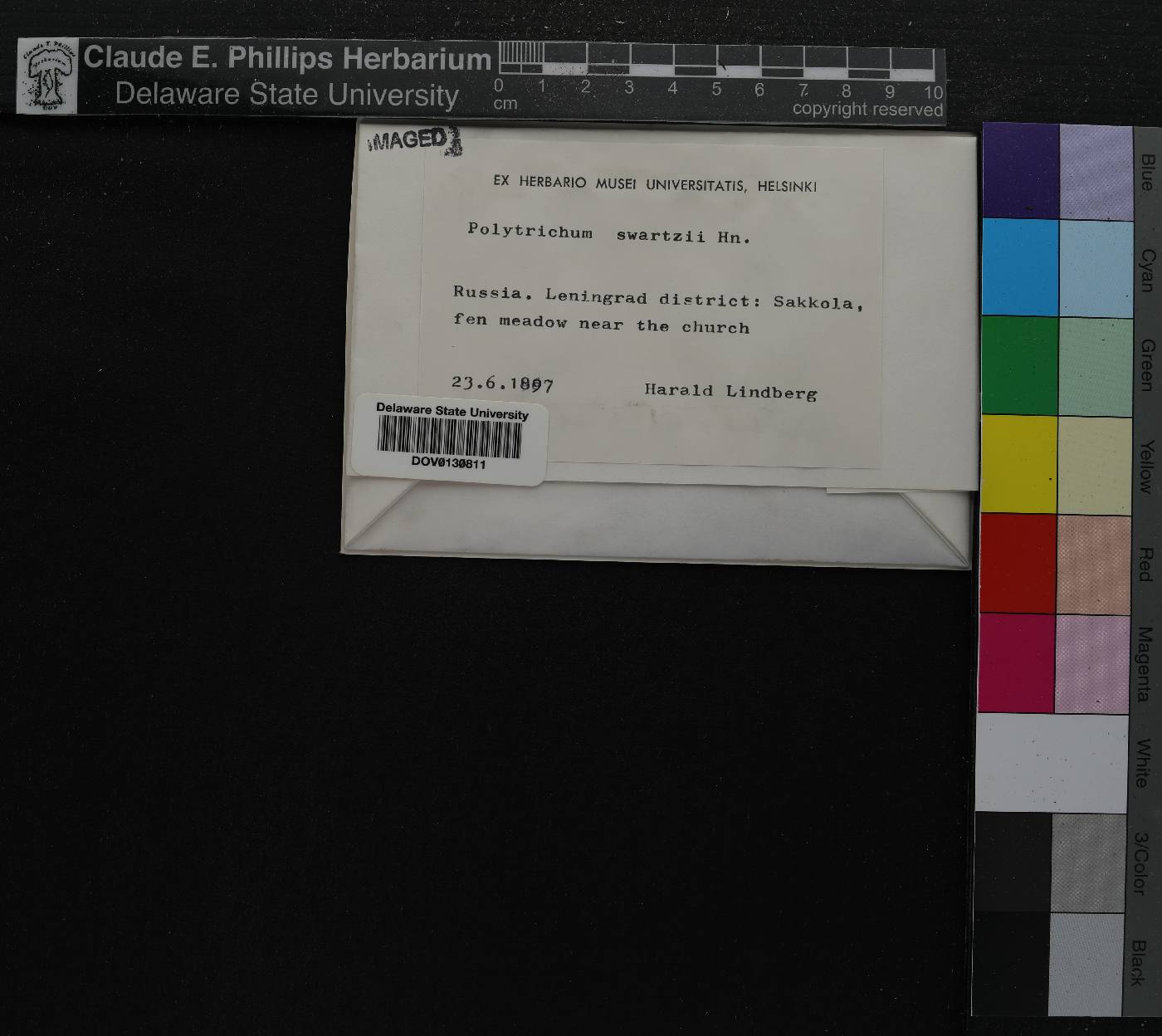Polytrichum swartzii
|
|
|
|
Family: Polytrichaceae
[Polytrichum algidum Hag. & C. Jens., morePolytrichum commune var. swartzii (Hartm.) Nyh.] |
Plants often rather soft and flexuose, green to blackish when old. Stems 2-9 cm, simple, erect, in proximal part moderately to densely brownish tomentose. Leaves 3-8 mm, loosely imbricate, appressed to erect-spreading and flexuose when dry, patent to widely spreading and weakly recurved when moist; sheath rectangular, scarcely narrowed to the blade; blade lanceolate to linear-lanceolate, often caducous at the junction of sheath and blade, the apex subulate, weakly channeled; marginal lamina 6-9 cells wide, distantly toothed to subentire; costa excurrent as short brown entire to serrulate tip, smooth abaxially or with a few teeth near apex; lamellae in profile entire to shallowly crenulate, 5-10 cells high, the marginal cells in section usually somewhat broadened, flat-topped or shallowly grooved, single or geminate, thin-walled, smooth, the marginal cells of lateral lamellae asymmetric; median sheath cells 75-110 × 2-12 µm, linear; cells of marginal lamina 9-15 µm, quadrate, thin- to firm-walled; perichaetial leaves with long sheathing bases and short subulate blade. Seta 2.5-5 cm, reddish brown. Capsule 2.5-3 cm, ± cubic, sharply 4-angled, suberect when mature, becoming horizontal when old; peristome teeth 64, 160-210 µm, obtuse, the basal portion 60-75 µm. Spores 12-15 µm. Very wet and regularly flooded situations, sedge meadows, wet tundra and lake shores (D. G. Long 1985); Greenland; Nfld. and Labr. (Labr.), N.W.T., Nunavut, Yukon; Alaska; Europe (Scandinavia); n, e Asia; Atlantic Islands (Iceland). Polytrichum swartzii is a northern species with distantly toothed to subentire leaves, differing chiefly by the rounded-quadrate, flat-topped (not retuse or grooved) and scarcely-thickened marginal cells of the lamellae. The capsules are shortly cubic. In Nunavut, it is known from Baffin and Devon islands.
|
|
|
|

